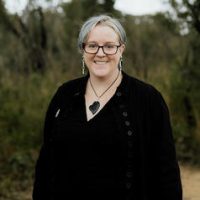Articles / More than 6,000 women told us what they wanted for their next pregnancy and birth. Here’s what they said


writer
Senior Lecturer of Midwifery, Western Sydney University

writer
Professor of Midwifery, Associate Dean Research and HDR, Midwifery Discipline Leader, Western Sydney University
0 hours
These are activities that expand general practice knowledge, skills and attitudes, related to your scope of practice.
0 hours
These are activities that require reflection on feedback about your work.
0 hours
These are activities that use your work data to ensure quality results.
These are activities that expand general practice knowledge, skills and attitudes, related to your scope of practice.
These are activities that require reflection on feedback about your work.
These are activities that use your work data to ensure quality results.
Many women want a different kind of pregnancy and birth the next time around. Many want to see the same one or two midwives throughout, and want to choose where they give birth. And when the time comes, they want a vaginal birth, with less intervention.
This is what thousands of Australian women told us when we asked if they would do anything differently if they had another baby.
We publish our findings today in British Medical Journal Open.
In 2021, we undertook Australia’s largest national study of birth experiences. As part of that, we asked women, “Would you do anything different if you were to have another baby?”
A total of 6,101 women left comments. More than 85% of comments were from women who said they’d do things differently the next time around.
Several themes emerged.
The largest group of comments (39.2%) were from women who wanted to avoid a repeat of their previous pregnancy and birth experience. They wanted to better advocate for themselves, get more informed about their choices, and avoid certain birth interventions.
For example, there were more than 500 comments from women who would try to avoid having their next labour started manually, known as an induction of labour.
A woman from Western Australia, who ended up having a caesarean, said:
I would 100% opt for no induction. I believe it’s the reason that led me to a c-section.
Australia has a high rate of induction, especially for women having their first babies (41% induced labour rate for women having their first baby). Women feel they are inadequately informed about the process of induction and not given a choice or alternative options.
We have also shown an induction of labour in Australia can lead to further medical interventions . High rates of medical intervention, such as induction, can lead to poorer maternal and neonatal outcomes when used excessively.
This was the second largest category (28.5% of comments). Here, most women said they wanted their next birth to be a vaginal birth (1,735 comments) and some would opt for a caesarean (438 comments).
Of the women wanting a vaginal birth, 1,021 comments related to wanting the next birth at home.
Women also said they wanted to be better prepared by getting better support. This ranged from a more supportive partner, hiring a doula and choosing their care provider.
Some 17.8% of all comments, the next-largest group, identified a specific model of maternity care. Women wanted to access a more supportive model that would respect their choices and wishes.
Most women in this group wanted “midwifery continuity of care”. This is where women are cared for by one or two midwives throughout their pregnancy, labour and birth, and into the post-birth period.
A woman from Victoria, who told us she wanted continuity of care next time around, said:
It is very important to me that next time I have a care provider who I fully trust, who has a good understanding of my birth preferences and who I know will be a strong advocate for me and who will encourage, empower, support and believe in me and my ability to birth my baby.
Midwifery continuity of care is available now in many public hospitals and is commonly called midwifery group practice or caseload midwifery. Some women access this type of care through private midwives. These charge a fee (there are some Medicare rebates) and can support women to have births at home.
But access to midwifery continuity of care is still limited and booked out early, meaning many women miss out, especially if they live in regional or remote regions.
This group of comments (2.9%) included ones from women in regional and remote parts of Australia.
They said they wished they had access to more local maternity services and equitable access to models that offer continuity of care and homebirth, such as private midwives.
A woman from a remote town in New South Wales said:
If I ever fell pregnant again. I would move to a bigger town. Obstetric care in the bush is very much lacking. Rural women like myself are lucky to even be alive after our experiences.
With many maternity units in rural and remote areas shutting down, women are forced to travel big distances and have fewer maternity care options than women who give birth in cities.

Some 10.2% of comments were from women who didn’t want to change anything the next time around.
Of these, just under half (47%) were from women who received midwifery continuity of care.
This is significant as midwifery continuity of care only represent 15% of maternity models in Australia.
We’ve shown that many women who reflect on their experience of pregnancy and birth wish they had made different decisions and wish they had a more positive experience to look back on.
A negative birth experience can lead to birth trauma and post-traumatic stress disorder.
Some of this may be unavoidable, such as when emergency situations arise during the labour. But trauma can also be related to the way women are respected, informed and cared for.
What women are asking for is humanised, evidence-based maternity care. So it’s time to act if we are to avoid the type of experiences highlighted during the current NSW Select Committee on Birth Trauma.
With evidence from more than 4,000 submissions, this reminds us we often fail women during one of the most vulnerable, yet potentially transforming experiences in their life. We hope women’s voices are finally heard.![]()
Hazel Keedle, Senior Lecturer of Midwifery, Western Sydney University; Daniella Susic, Clinical Academic Obstetrician, UNSW Sydney, and Hannah Dahlen, Professor of Midwifery, Associate Dean Research and HDR, Midwifery Discipline Leader, Western Sydney University
This article is republished from The Conversation under a Creative Commons license. Read the original article.
![]()

Menopausal Hormone Therapy - What Dose of Estrogen is Best?

Cardiovascular Benefits of GLP1s – New Evidence

Oral Contraceptive Pill in Teens

RSV and the Heart

writer
Senior Lecturer of Midwifery, Western Sydney University

writer
Professor of Midwifery, Associate Dean Research and HDR, Midwifery Discipline Leader, Western Sydney University


Modified but kept in place
Eliminated entirely without replacement
Maintained as is
Completely replaced with an alternative system
Listen to expert interviews.
Click to open in a new tab
Browse the latest articles from Healthed.
Once you confirm you’ve read this article you can complete a Patient Case Review to earn 0.5 hours CPD in the Reviewing Performance (RP) category.
Select ‘Confirm & learn‘ when you have read this article in its entirety and you will be taken to begin your Patient Case Review.
Menopause and MHT
Multiple sclerosis vs antibody disease
Using SGLT2 to reduce cardiovascular death in T2D
Peripheral arterial disease
